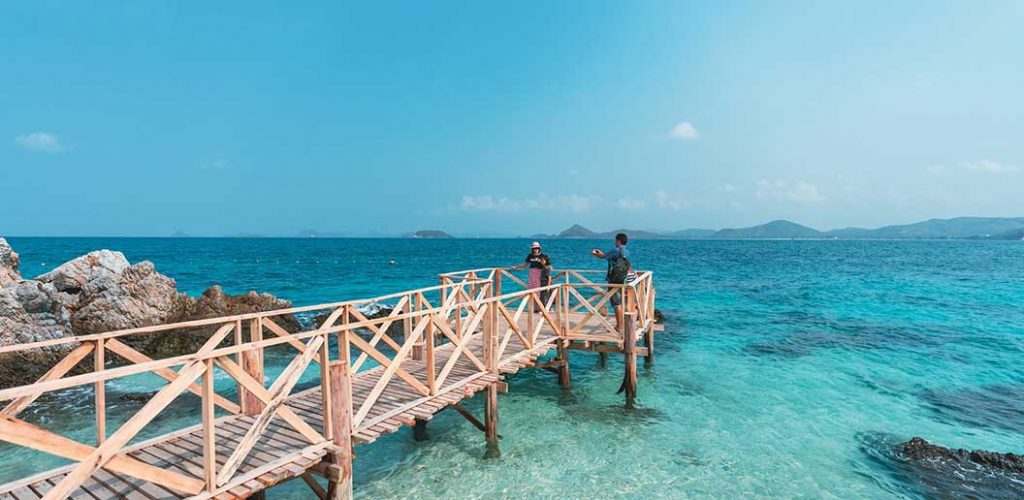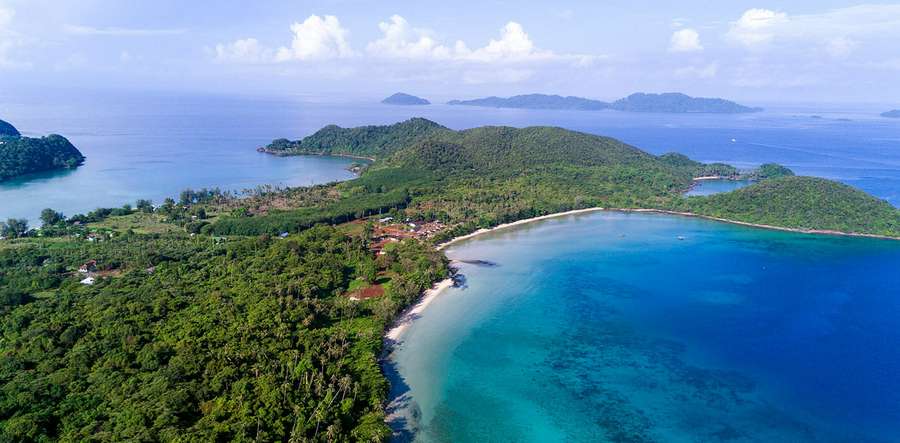 Bordering Cambodia on the East, Chanthaburi Province in the North and the Gulf of Thailand in the South, Trat is a relatively quiet coastal province that has recently started to attract an international audience – and for good reason. Koh Chang is the third largest tropical island in Thailand and home to the Koh Chang National Park (which also encompasses Koh Mak and Koh Kood) with each promoting sustainable and eco-travel initiatives and some of the most beautiful landscapes you are ever going to see in Asia.
Bordering Cambodia on the East, Chanthaburi Province in the North and the Gulf of Thailand in the South, Trat is a relatively quiet coastal province that has recently started to attract an international audience – and for good reason. Koh Chang is the third largest tropical island in Thailand and home to the Koh Chang National Park (which also encompasses Koh Mak and Koh Kood) with each promoting sustainable and eco-travel initiatives and some of the most beautiful landscapes you are ever going to see in Asia.
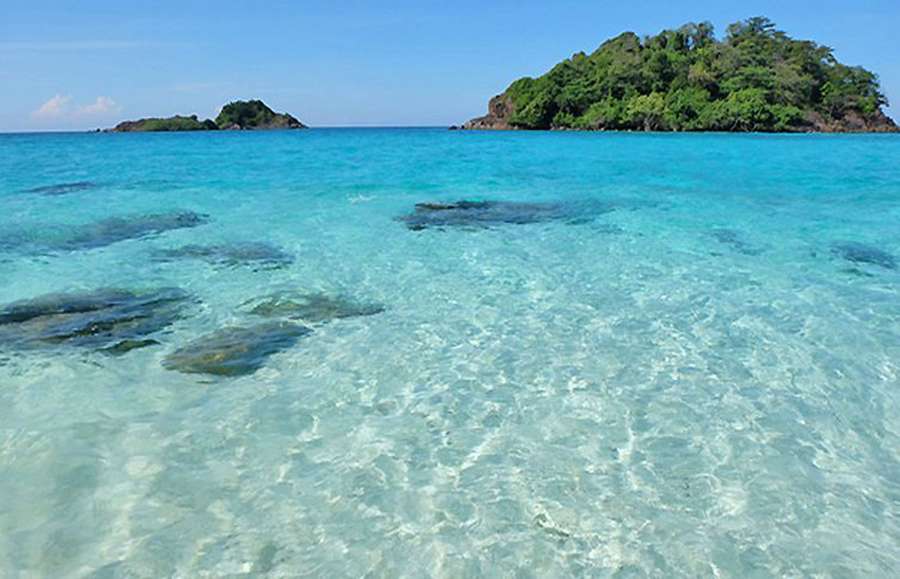 The province has a very rich history, tracing back to the reign of King Prasat Thong of the Kingdom of Ayutthaya. The strategic location of Trat has proved to be vital in the development of a country’s stability and economy. Trat served as a checkpoint and buffer city in 1767 and was responsible for providing provisions to King Taksin the Great before he moved his navy from Chanthaburi to Ayutthaya, where he expelled the Burmese and liberated the Kingdom from Burmese rule. Its population has long been a mix of Thai, Lao, Chinese, Khmer and Vietnamese. In 1904, Trat was briefly annexed by the French army who were then in control of a lot of Indochina. However, it was soon handed back in 1907 in return for border land and what is now the town of Siem Reap. When you visit Trat you will see the old Siamese flag, depicting a single white elephant on a red background flying all around the town. This is to celebrate the province’s independence.
The province has a very rich history, tracing back to the reign of King Prasat Thong of the Kingdom of Ayutthaya. The strategic location of Trat has proved to be vital in the development of a country’s stability and economy. Trat served as a checkpoint and buffer city in 1767 and was responsible for providing provisions to King Taksin the Great before he moved his navy from Chanthaburi to Ayutthaya, where he expelled the Burmese and liberated the Kingdom from Burmese rule. Its population has long been a mix of Thai, Lao, Chinese, Khmer and Vietnamese. In 1904, Trat was briefly annexed by the French army who were then in control of a lot of Indochina. However, it was soon handed back in 1907 in return for border land and what is now the town of Siem Reap. When you visit Trat you will see the old Siamese flag, depicting a single white elephant on a red background flying all around the town. This is to celebrate the province’s independence.
 Formerly known as Muang Thung Yai (“city of large fields”), Trat consists of various small and large islands. In the past the area was an important stop for sailors but nowadays it’s best known as the hopping off point for the 52 islands. Infamous for its diverse marine life, island-hopping is popular here, especially to Koh Chang and Koh Kood, the latter of which is also known as the “Maldives of Thailand”. Very few people choose to stay more than a night in Trat town, although the town is well-known for its bustling night market. The streets in the town center are lined with ‘Mom & Pop’ stores selling everything imaginable. The architecture tends to be drab, grey shophouses but there are some hidden gems as you approach the riverside area. It’s here that you will find a much more charming area with old wooden homes lining the narrow streets, some of which have been converted into budget guesthouses, coffee-shops and small restaurants.
Formerly known as Muang Thung Yai (“city of large fields”), Trat consists of various small and large islands. In the past the area was an important stop for sailors but nowadays it’s best known as the hopping off point for the 52 islands. Infamous for its diverse marine life, island-hopping is popular here, especially to Koh Chang and Koh Kood, the latter of which is also known as the “Maldives of Thailand”. Very few people choose to stay more than a night in Trat town, although the town is well-known for its bustling night market. The streets in the town center are lined with ‘Mom & Pop’ stores selling everything imaginable. The architecture tends to be drab, grey shophouses but there are some hidden gems as you approach the riverside area. It’s here that you will find a much more charming area with old wooden homes lining the narrow streets, some of which have been converted into budget guesthouses, coffee-shops and small restaurants.
 The largest island in the east and the third largest in Thailand after Phuket and Samui, Koh Chang (Elephant Island) isn’t only well-known for its size. Its diversity is as grand as its name and the island offers a wide range of activities. Thanks to its mountainous and forested landscape, Koh Chang visitors get to enjoy not only the beaches but also hiking and relaxing in the Khlong Phlu waterfall area. An hour away from Koh Chang by ferry, Koh Kood is an ideal destination for those wanting to go more off-the-beaten-path while enjoying a variety of activities. Go snorkeling, kayaking, canoeing and swimming in the stunning Klong Chao Waterfall. From its crystal clear water, pristine beaches, lush tropical rainforests and waterfalls, the island is visibly the jewel of the east.
The largest island in the east and the third largest in Thailand after Phuket and Samui, Koh Chang (Elephant Island) isn’t only well-known for its size. Its diversity is as grand as its name and the island offers a wide range of activities. Thanks to its mountainous and forested landscape, Koh Chang visitors get to enjoy not only the beaches but also hiking and relaxing in the Khlong Phlu waterfall area. An hour away from Koh Chang by ferry, Koh Kood is an ideal destination for those wanting to go more off-the-beaten-path while enjoying a variety of activities. Go snorkeling, kayaking, canoeing and swimming in the stunning Klong Chao Waterfall. From its crystal clear water, pristine beaches, lush tropical rainforests and waterfalls, the island is visibly the jewel of the east.
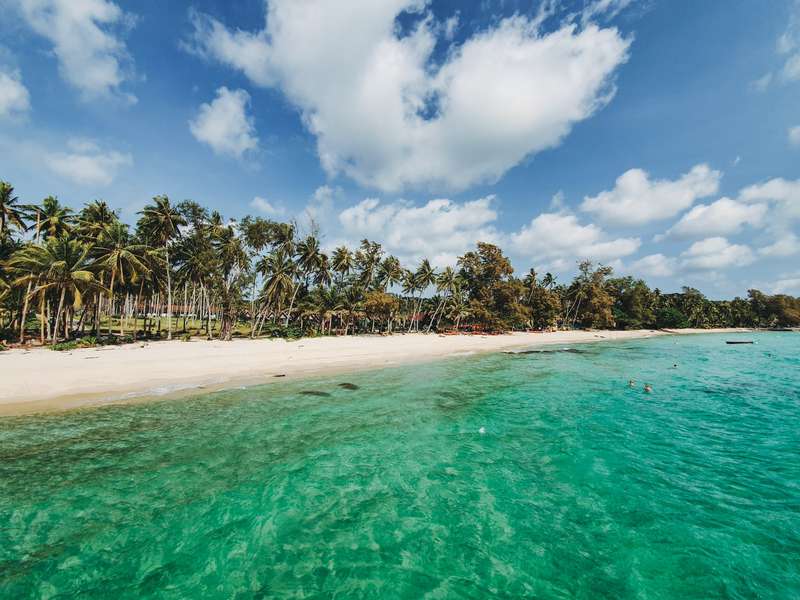 But Koh Mak is the best base for divers. In between Koh Chang and Koh Kood, Koh Mak is not far from the Rang Islands, where you’ll find more corals than anywhere in Eastern Thailand. Among them, Koh Wai is the best diving spot as its home to a coral reef conservation project. Don’t stop here though, Koh Kham (not to be confused with the one in Chonburi) is 15 minutes away from Koh Mak and here you’ll find that the small private island is covered with black volcanic boulders. The natural beauty of the island is enriched further by the marine life, including the giant clams under the sea. The black boulders are nothing in comparison to the beach in the Laem Ngop area though. The only black sand beach in Thailand, the island is also home to the iconic red and white Laem Ngop Lighthouse and offers a brilliant view of the sunset.
But Koh Mak is the best base for divers. In between Koh Chang and Koh Kood, Koh Mak is not far from the Rang Islands, where you’ll find more corals than anywhere in Eastern Thailand. Among them, Koh Wai is the best diving spot as its home to a coral reef conservation project. Don’t stop here though, Koh Kham (not to be confused with the one in Chonburi) is 15 minutes away from Koh Mak and here you’ll find that the small private island is covered with black volcanic boulders. The natural beauty of the island is enriched further by the marine life, including the giant clams under the sea. The black boulders are nothing in comparison to the beach in the Laem Ngop area though. The only black sand beach in Thailand, the island is also home to the iconic red and white Laem Ngop Lighthouse and offers a brilliant view of the sunset.
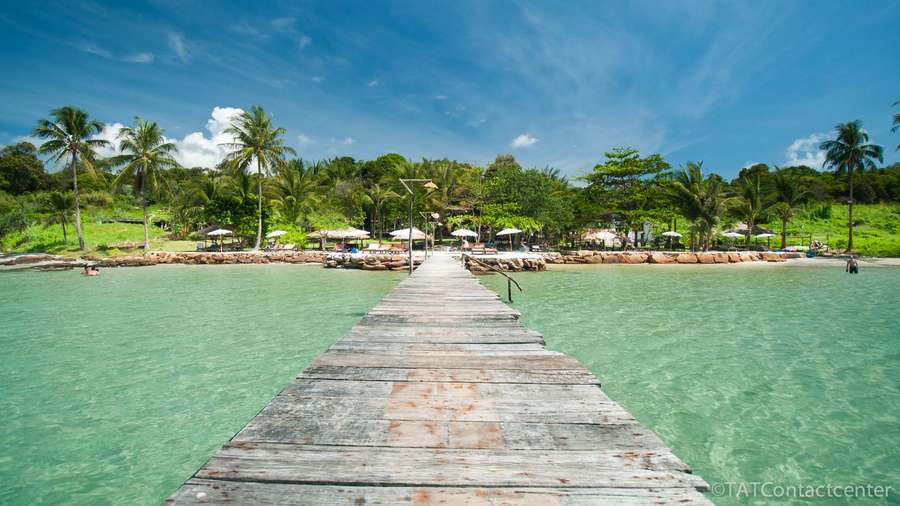 If you’d rather remain on land, you’d be impressed with Koh Kradan which is ten minutes away from Koh Mak. Unlike Trat’s other mountainous islands, Koh Kradan is entirely flat. Instead of rainforests, the island is covered by grass and coconut trees, one of them somehow bending horizontal to the ground before lifting its top up to the sky. However, the stars of the island are the deer. Thousands of them, roaming freely.
If you’d rather remain on land, you’d be impressed with Koh Kradan which is ten minutes away from Koh Mak. Unlike Trat’s other mountainous islands, Koh Kradan is entirely flat. Instead of rainforests, the island is covered by grass and coconut trees, one of them somehow bending horizontal to the ground before lifting its top up to the sky. However, the stars of the island are the deer. Thousands of them, roaming freely.
 The climate in and around Trat is one of the wettest in the country. The rainy season lasts from May to October. The upside is that this is a very fertile, green area of the country. You won’t see any of the parched landscapes that can be found in the north. It is one of the main fruit growing areas of the country with the fruit harvesting season being March to August. Trat grows the best salaks (or snake fruit) in the whole country. If you have time, stop at one of the farms to learn about them. Other fruits include mangosteen, rambutan and the controversial durian.
The climate in and around Trat is one of the wettest in the country. The rainy season lasts from May to October. The upside is that this is a very fertile, green area of the country. You won’t see any of the parched landscapes that can be found in the north. It is one of the main fruit growing areas of the country with the fruit harvesting season being March to August. Trat grows the best salaks (or snake fruit) in the whole country. If you have time, stop at one of the farms to learn about them. Other fruits include mangosteen, rambutan and the controversial durian.
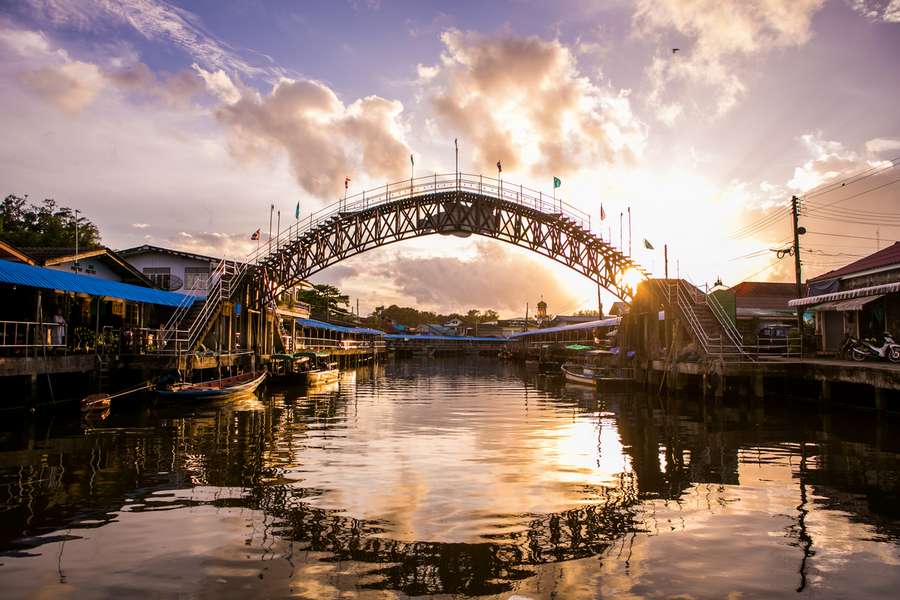 Travel to Trat is not difficult. From Bangkok to the islands in Mu Koh Chang National Park, it takes about 4-5 hours by car or bus and then a 45-minute ferry ride. Trat Airport is served by direct flights from Suvarnabhumi Airport, though it’s a much pricier option. The visit would be well-worth it though considering Trat offers more than a picturesque Thailand travel destination. The surrounding natural beauty gives out a relaxing tropical feel that you can never get in the city. So if you’re looking for the ultimate holiday location, let Trat surprise you with its overflowing charm and beauty.
Travel to Trat is not difficult. From Bangkok to the islands in Mu Koh Chang National Park, it takes about 4-5 hours by car or bus and then a 45-minute ferry ride. Trat Airport is served by direct flights from Suvarnabhumi Airport, though it’s a much pricier option. The visit would be well-worth it though considering Trat offers more than a picturesque Thailand travel destination. The surrounding natural beauty gives out a relaxing tropical feel that you can never get in the city. So if you’re looking for the ultimate holiday location, let Trat surprise you with its overflowing charm and beauty.


